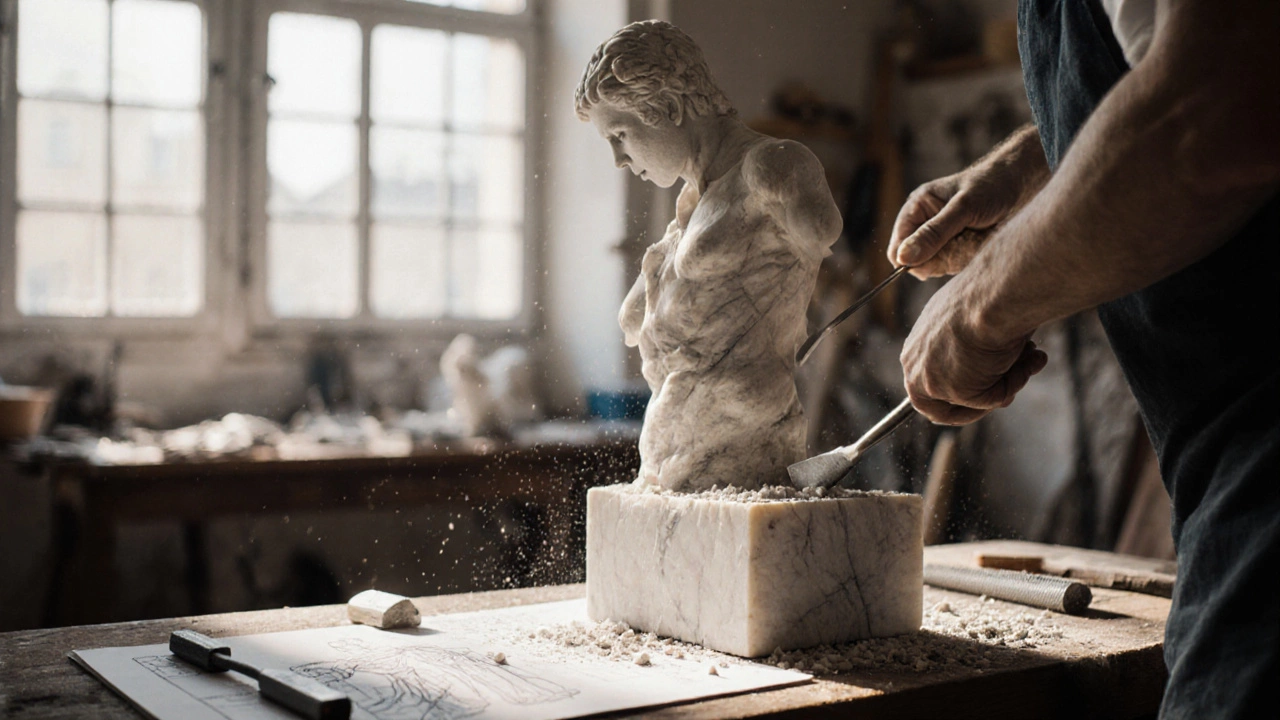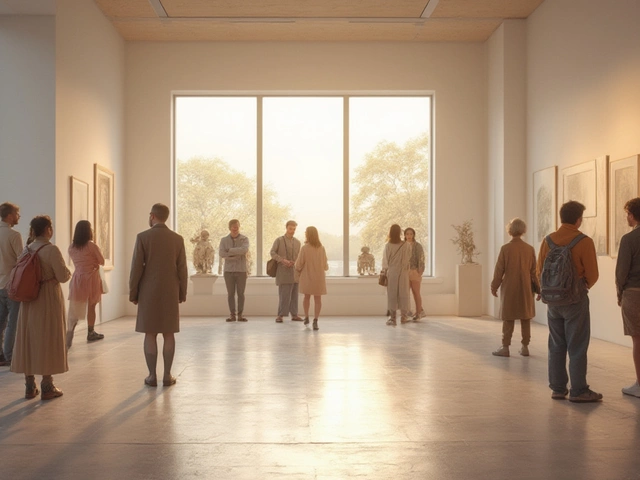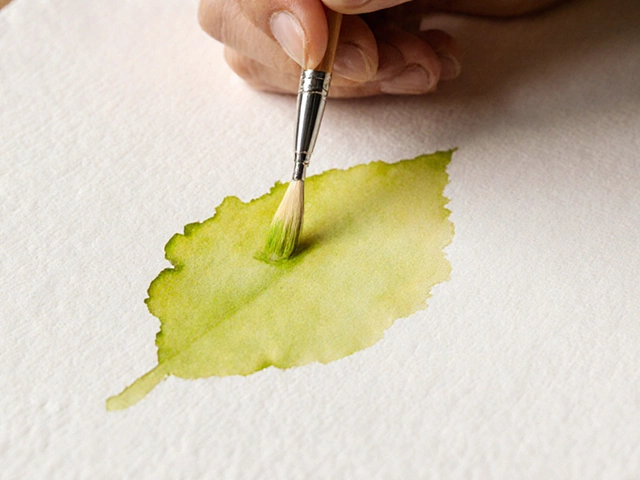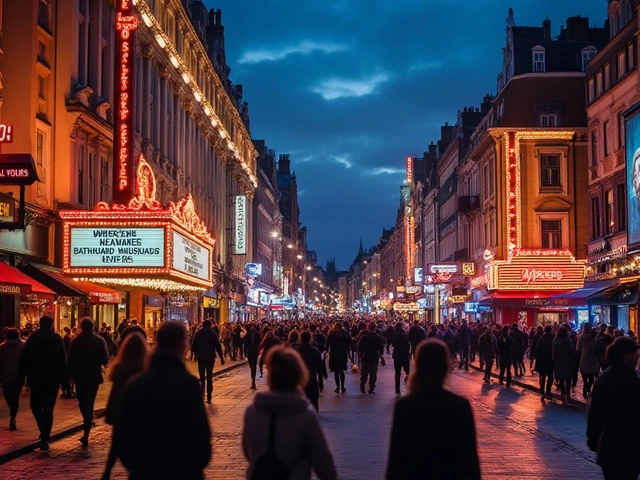Realistic Sculpture Terminology Explorer
Explore the different terms used for realistic sculptures and understand how they differ in style and level of detail.
Figurative Sculpture Core Term
Any three-dimensional work that represents a recognizable figure, animal, or object, without being strictly photographic.
Think of a marble horse or a bronze dancer—recognizable, but the artist may stylize forms for expression.
Representational Sculpture Subcategory
A subcategory of figurative art that aims to faithfully reproduce the visual characteristics of its subject.
Museums use this term when cataloguing busts of historical figures.
Naturalistic Sculpture Style Focus
Emphasizes lifelike texture, proportion, and pose, often based on direct observation of the model.
Sculptors work from live models to capture the subtle tilt of a head.
Hyperrealistic Sculpture Extreme Realism
An extreme form of realism that mimics photography down to pores, skin translucency, and even minute dust particles.
Artists like Ron Mueck and Duane Hanson use polyester resin or silicone to achieve uncanny valley effect.
Comparison Table
| Style | Typical Materials | Level of Detail | Typical Use |
|---|---|---|---|
| Realistic (Figurative/Representational) | Bronze, marble, stone, resin | High – strives for anatomical accuracy | Commemoration, public monuments, museum collections |
| Stylized / Modernist | Metal, wood, mixed media | Medium – exaggerated forms, simplified lines | Abstract expression, decorative pieces |
| Hyperrealistic | Resin, silicone, 3-D printed polymer | Extreme – photographic precision | Gallery installations, commentary on media culture |
| Minimalist | Steel, concrete, glass | Low – focus on shape, space, material | Conceptual art, outdoor plazas |
Key Takeaways
- Realistic sculpture includes terms like figurative, representational, naturalistic, and hyperrealistic
- Each term reflects different levels of detail and artistic intent
- Understanding these distinctions helps navigate art collections and exhibitions
- Materials range from traditional bronze and marble to modern resin and 3D printing
Quick Takeaways
- Realistic sculptures are commonly referred to as figurative, representational, naturalistic, or hyperrealistic, depending on style and detail.
- The main techniques involve bronze casting, marble carving, resin molding, and modern 3D printing.
- Understanding the terminology helps you navigate museums, galleries, and art market listings.
- Compare realistic work to abstract, stylized, and minimalist sculpture with the table below.
- Visit key institutions like the Louvre, the Hall of Sculpture in London, and public parks to see examples in person.
What Are Realistic Sculptures?
When you hear the term realistic sculpture is a three‑dimensional artwork that strives to replicate the appearance of real objects or living beings as accurately as possible, you might wonder if there’s a special name for it. In everyday conversation people often call them “lifelike” or “figurative” pieces, but the art world uses a handful of specific terms to draw subtle distinctions.
In this article we’ll unpack those terms, trace the history of realism in sculpture, and show you how artists achieve that convincing look.
Historical Roots of Realistic Sculpture
Realistic sculpture dates back to ancient Greece, where masters like Phidias created marble gods that looked almost human. The Romans took the concept further, casting bronze copies of Greek works and adding portrait busts of emperors that captured every wrinkle. During the Renaissance, Donatello’s “David” and Michelangelo’s “Pieta” set new standards for anatomical accuracy.
Fast forward to the 19th‑century academic salons, where artists such as Jean‑Baptiste Carpeaux exhibited highly detailed bronze figures that rivaled photography. The 20th century introduced a break‑away where abstraction grew, yet a parallel current-naturalism-kept pushing for realism.
Key Terms and How They Differ
Below are the most common labels you’ll encounter. Each first mention comes with a concise definition.
Figurative sculpture is any three‑dimensional work that represents a recognizable figure, animal, or object, without being strictly photographic. Think of a marble horse or a bronze dancer-recognizable, but the artist may stylize forms for expression.
Representational sculpture is a subcategory of figurative art that aims to faithfully reproduce the visual characteristics of its subject. It’s the term museums use when cataloguing busts of historical figures.
Naturalistic sculpture is a style that emphasizes lifelike texture, proportion, and pose, often based on direct observation of the model. Sculptors might work from live models to capture the subtle tilt of a head.
Hyperrealistic sculpture is an extreme form of realism that mimics photography down to pores, skin translucency, and even minute dust particles. Artists like Ron Mueck and Duane Hanson use polyester resin or silicone to achieve a uncanny valley effect.
Portrait sculpture is a sculpted likeness of a specific individual, often used for commemorative or decorative purposes. From courtroom busts to public statues, portraiture remains a mainstay of realistic work.
All these terms share a goal: to make the stone, metal, or polymer look like the thing it depicts.
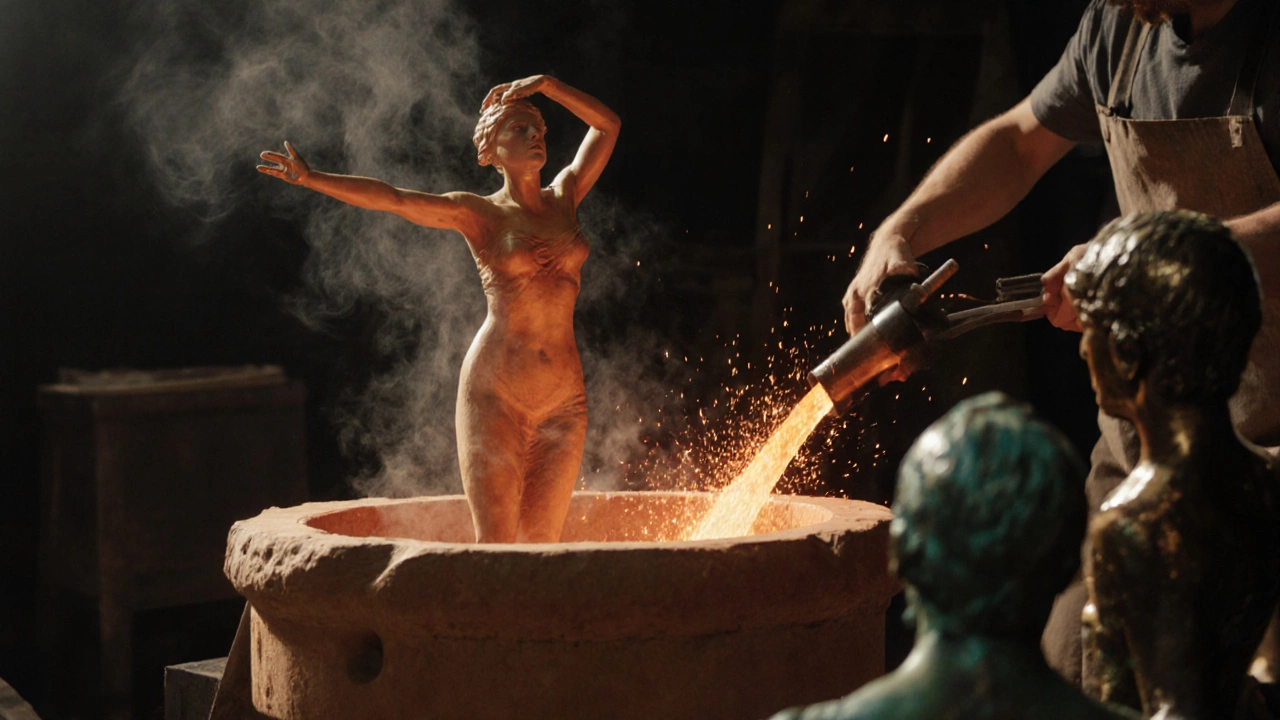
Materials & Techniques That Bring Realism to Life
Realistic artists choose materials that let them carve, cast, or model fine details.
Bronze casting is a process where a wax model is encased in a ceramic shell, melted out, then filled with molten bronze. The resulting patina can be polished to a mirror shine or left to develop a greenish verdigris.
Marble carving is the subtractive technique of chiseling blocks of marble to reveal a form, prized for its smooth surface and translucency. Master carvers use a point, a claw, and abrasive pads to refine details such as facial veins.
Modern sculptors also work with resin, silicone, and even 3D‑printed polymer to capture hyperrealistic skin textures. Digital scanning of a live model creates a point cloud that can be printed in layers, preserving every imperfection.
Finishing steps-polishing, patination, painting, or applying wax-add the final touches that make a statue appear alive.
How Artists Achieve Lifelike Details
- Study Anatomy: Understanding bone structure, muscle groups, and fat distribution is essential. Many figurative programs require students to dissect or use medical imaging.
- Live Modeling: Working from a live sitter gives real‑time feedback on posture, weight shift, and subtle expressions.
- Maquette Creation: Artists sculpt a small-scale model (maquette) first, allowing them to solve proportion issues before committing to the full size.
- Mold Making: For hyperrealistic work, a silicone mold captures surface texture. The artist can then cast multiple copies in resin.
- Finishing Techniques: Airbrushing pigment, applying wax, or hand‑painting veins and blemishes adds the “skin‑like” quality viewers notice.
By combining these steps, a sculptor can move from a rough block to a piece that looks as if it could step off its pedestal.
Comparing Realistic Sculpture to Other Styles
| Style | Typical Materials | Level of Detail | Typical Use |
|---|---|---|---|
| Realistic (Figurative/Representational) | Bronze, marble, stone, resin | High - strives for anatomical accuracy | Commemoration, public monuments, museum collections |
| Stylized / Modernist | Metal, wood, mixed media | Medium - exaggerated forms, simplified lines | Abstract expression, decorative pieces |
| Hyperrealistic | Resin, silicone, 3‑D printed polymer | Extreme - photographic precision | Gallery installations, commentary on media culture |
| Minimalist | Steel, concrete, glass | Low - focus on shape, space, material | Conceptual art, outdoor plazas |
Use this table when you’re trying to decide whether a piece you see fits into the realistic camp or belongs elsewhere.
Where to See Realistic Sculptures in Person
Seeing a work up close reveals details that photos hide. Some top spots include:
- The Louvre Museum - Home to the ancient Greek bronze “Hermes.
- The National Gallery of Art’s Sculpture Garden in Washington, D.C., featuring bronze portraits of historic figures.
- Paris’s Rodin Museum - Rodin’s “The Thinker” is a masterclass in naturalistic marble.
- Public parks such as Chicago’s Millennium Park, where realistic bronze figures sit alongside modern installations.
- Contemporary galleries that showcase hyperrealistic artists like Ron Mueck.
Each setting offers a different lighting and scale that influences how realism is perceived.
Common Misconceptions
People often conflate realism with hyperrealism, assuming any lifelike piece is “hyperrealistic.” In reality, hyperrealism pushes the envelope to a level that can fool a camera, while realistic sculpture may leave some painterly brush‑stroke suggestions.
Another myth is that realistic sculpture is “old‑fashioned.” Modern artists use the same techniques to comment on technology, identity, and politics, proving the style remains vibrant.
Frequently Asked Questions
Frequently Asked Questions
What is the official term for lifelike sculptures?
The most widely accepted term is realistic sculpture, though you’ll also see “figurative,” “representational,” or “naturalistic” depending on context.
How does hyperrealism differ from regular realism?
Hyperrealism strives for photographic precision, capturing pores, sweat, and minute imperfections, whereas realistic sculpture focuses on accurate anatomy and proportion without necessarily reproducing every surface detail.
Which material is best for outdoor realistic sculptures?
Bronze is the traditional choice because it weathers well and can be treated with protective patinas. Stone such as limestone or granite also endures long exposure.
Can I create realistic sculptures at home without a studio?
Yes. Wax, polymer clay, or 3‑D printing resin kits allow hobbyists to practice anatomy and surface detailing on a small scale before moving to larger media.
Where can I learn realistic sculpture techniques?
Many art schools offer figurative sculpture programs; online platforms like Coursera and Skillshare host anatomy for artists courses. Apprenticeships in foundries also provide hands‑on casting experience.
Next Steps
If you’re ready to explore realistic sculpture, start by visiting a local museum’s sculpture wing. Take note of the materials, the way light hits the surface, and any visible tool marks. Then, try a simple clay study of a hand or a fruit-focus on proportion before chasing texture.
When you feel comfortable, experiment with a small bronze casting kit or a home 3‑D printer to see how the medium changes your approach. Remember, the goal isn’t just to copy a photograph but to convey the presence of the subject in space.
